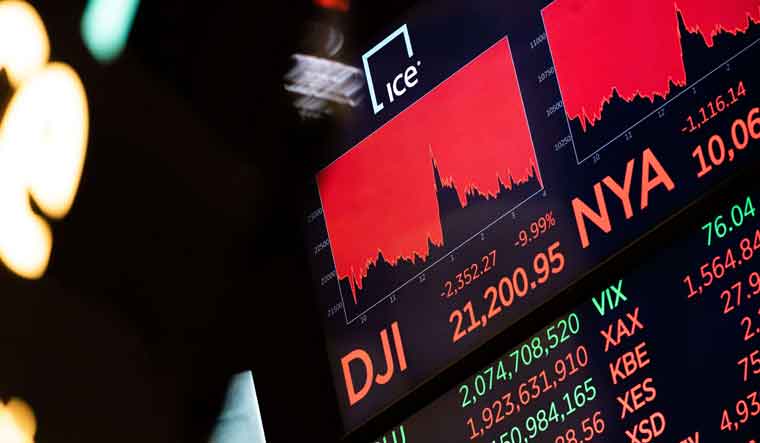The bear run of Sensex and Nifty on Friday was triggered by the crash in the US stock markets, which witnessed the worst single-day loss since the 1987 Black Monday crash. The Dow Jones dropped by just under 10 per cent during Thursday's trading as the details of the fiscal support off the US remained uncertain and investors continued to be pessimistic about a quick recovery.
In 1987, a number of factors such as heightened hostilities in the Persian Gulf, fear of higher interest rates, a five-year bull market without a significant correction, and the introduction of computerised trading might have contributed to the Monday mayhem of October 22. However, on Thursday, the factors were more pronounced. The coronavirus pandemic and the lack of proactiveness from the side of the US government to tackle it, coupled with crash in crude oil prices, left the US markets spooked on Thursday.
Even as the Federal Reserve stepped in to offer nearly $1.5 trillion in emergency relief investors feel that the central banks efforts might not prove effective to boost the short and long-term health of the American and, in turn, global economy.
Market watchers say investors want to see a big, coordinated response from governments and central banks to shore up the virus-weakened economy. The S&P 500 surged as much as 3.7 per cent in the morning, only to see the gains evaporate by midday. The index then bounced up and down before turning decisively higher after President Donald Trump pitched his ideas for a break on payroll taxes and other economic relief to Senate Republicans.
By the end of trading, the S&P 500 was up 4.9 per cent. It erased three-fifths of Monday's loss, which was the sharpest since 2008, when global authorities banded together to rescue the economy from the financial crisis.
The volatility reflected the mood of a market just as preoccupied with the virus as the rest of the world.
Since US stocks set their record high just a few weeks ago, traders have crossed over from dismissing the economic pain created by COVID-19 thinking it's similar to the flu and could stay mostly contained in China to being in thrall to it worrying that it may cause a worldwide recession.
While they won't cure illnesses or get quarantined workers back into factories, spending and stimulus programs would put cash into the hands of households and businesses while health experts try to corral the virus. That could stave off or at least moderate a possible recession.
Investors saw glimmers of a coordinated response, which led to Tuesday's optimism. But as markets waited on Tuesday for details about Trump's plan, prices oscillated sharply. However, with the Trump government's luke warm response to the first global pandemic in a decade, investors seem to have lost all confidence of a quick recovery.


